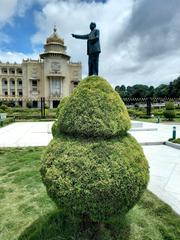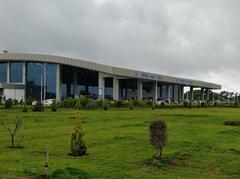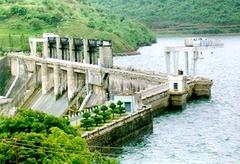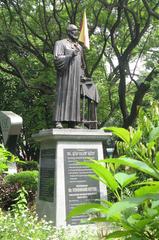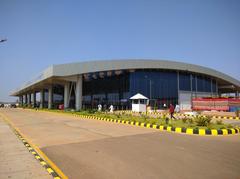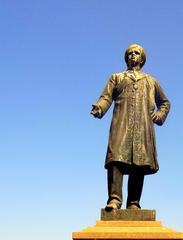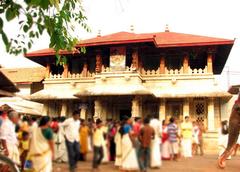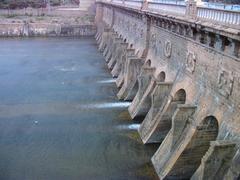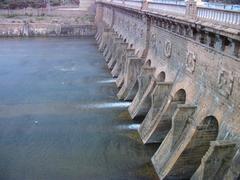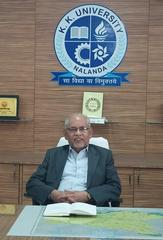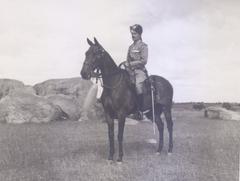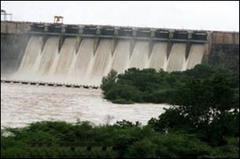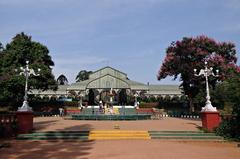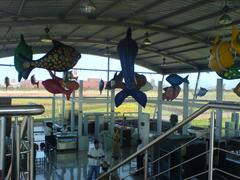
Discover the Wonders of Karnataka, India
Publication Date: 14/08/2024
Welcome to Karnataka: A Journey Begins
Imagine walking through a land where every breeze carries the whispers of ancient history, and every stone echoes with tales of empires long gone. Welcome to Karnataka, a state in southern India that seamlessly blends the past with the present. It’s a place where you can time travel through the ages, from the Paleolithic era to the modern-day Silicon Valley of India, Bangalore (Wikipedia).
Karnataka’s history is a rich tapestry woven with the threads of various dynasties and empires. From the Nanda and Maurya Empires in the 4th and 3rd centuries BCE to the Hoysala Empire’s intricate temples in the 10th to 14th centuries, every era has left its indelible mark on this land (Wikipedia). Imagine the grandeur of the Vijayanagara Empire’s capital, Hampi, or the architectural marvels of the Chalukya Dynasty carved into rock at Badami, Aihole, and Pattadakal (Adotrip).
But Karnataka is not just about its historical significance. It’s a state where you can savor the flavors of Bisi Bele Bath and Mysore Pak, feel the cool breeze on your face at Jog Falls, and hear the rhythmic beats of Carnatic and Hindustani music (Caleidoscope). Whether you’re exploring the bustling markets of Bangalore, the serene coffee plantations of Coorg, or the hidden carvings in Hampi’s Vittala Temple, Karnataka promises an adventure like no other. Ready to embark on this journey? Let’s dive in!
Your Karnataka Adventure Map
The Enchanting Chronicles of Karnataka
Step into Karnataka’s Timeless Tapestry
Ever imagined a place where history sings through every breeze and whispers through ancient stones? Welcome to Karnataka—a land where time travel feels real. Ready for the journey? Let’s dive in!
Ancient Civilizations and Early History
Karnataka’s story begins in the Paleolithic era, where human footprints mark its ancient landscapes. Imagine the region bustling under the Nanda and Maurya Empires in the 4th and 3rd centuries BCE. The Brahmagiri edicts in Chitradurga, dating around 230 BCE, are time capsules from Emperor Ashoka, referring to the region as ‘Isila,’ meaning ‘fortified region’ in Sanskrit (Wikipedia).
Influences from the Indus Valley Civilization
Ever wondered if the gold in Harappa had a South Indian connection? It did! Mines in Karnataka supplied gold to these ancient cities. The Neolithic inhabitants and megalithic structures in Kodagu and Moorey Betta hills reveal a vibrant prehistoric culture (Wikipedia).
Dynastic Rule and Medieval Period
The Kadamba Dynasty
Imagine stepping into the world of the Kadambas, who began ruling in the 4th century CE. Their contributions to Kannada literature and architecture, like the Mahakuta group of temples in Badami, are love letters to Karnataka’s rich heritage (Wikipedia).
The Chalukya Dynasty
From the 6th to the 12th centuries, the Chalukyas carved their dreams into rock. The Badami Chalukyas’ rock-cut temples at Badami, Aihole, and Pattadakal (a UNESCO World Heritage Site) are masterpieces that speak of their grandeur (Adotrip).
The Rashtrakuta Dynasty
The Rashtrakutas, ruling from the 8th to the 10th centuries, left behind marvels like the Kailasanatha temple in Ellora, Maharashtra, and the Jain Narayana temple at Pattadakal. Their legacy is etched in stone (Wikipedia).
The Hoysala Empire
Between the 10th and 14th centuries, the Hoysala Empire adorned Karnataka with stunning temples like the Chennakeshava Temple in Belur and the Hoysaleswara Temple in Halebidu. Imagine intricate carvings and sculptures that seem to breathe history (Indian Holiday).
The Vijayanagara Empire
The 14th-century Vijayanagara Empire’s capital, Hampi, is a UNESCO World Heritage Site. Picture the ruins of the Virupaksha Temple, Vittala Temple, and the Stone Chariot, echoing tales of grandeur (Caleidoscope).
The Bahmani Sultanate and Deccan Sultanates
From the 14th to the 17th century, the Bahmani Sultanate and its successors, the Deccan Sultanates, gifted Karnataka with Indo-Islamic architectural gems like the Gol Gumbaz in Bijapur, which boasts the second-largest dome in the world (Wikipedia).
The Kingdom of Mysore
The 14th-century Kingdom of Mysore, under the Wodeyar dynasty, transformed into a cultural and economic hub. The Indo-Saracenic Mysore Palace is a testament to its glory (Indian Holiday).
Colonial Period and Modern History
The Maratha Empire
In the 17th and 18th centuries, the Maratha Empire’s presence was strong in Karnataka, particularly in the north. Imagine the first expeditions led by Chhatrapati Shivaji (Wikipedia).
British Rule
Post-Anglo-Mysore Wars, the British East India Company carved up Karnataka, introducing modern education, infrastructure, and administrative reforms that shaped its future (Wikipedia).
Post-Independence Era
After independence in 1947, the Kannada-speaking regions united under the States Reorganization Act of 1956, forming what we now know as Karnataka in 1973 (Wikipedia).
Key Historical Sites
Hampi
Hampi, a UNESCO World Heritage Site, is a treasure trove for history buffs. The Virupaksha Temple, Vittala Temple, and the iconic Stone Chariot offer a window into the Vijayanagara Empire’s grandeur (Adotrip).
Mysore Palace
The Mysore Palace is a fusion of Hindu, Rajput, Muslim, and Gothic styles. It’s more than a monument; it’s a storyteller, especially during the vibrant Dussehra celebrations (Indian Holiday).
Pattadakal
Pattadakal’s UNESCO World Heritage Site status is thanks to its collection of 7th and 8th-century temples. These structures blend Dravidian and Nagara architectural styles, creating a harmonious symphony in stone (Adotrip).
Badami
Badami’s rock-cut temples, carved from red sandstone cliffs, are masterpieces of Chalukyan architecture. Imagine exploring these ancient wonders (Adotrip).
Srirangapatna
Srirangapatna, an island town on the Kaveri River, is rich in history. Explore the Ranganathaswamy Temple, Srirangapatna Fort, and the Gumbaz of Tipu Sultan (Indian Holiday).
Cultural Heritage
Karnataka’s cultural heritage is a vibrant tapestry of traditional music, dance, art, and festivals. Dive into the rhythmic beats of Carnatic and Hindustani music, or the mesmerizing moves of Bharatanatyam, Yakshagana, and Dollu Kunitha (Caleidoscope).
Visitor Tips
- Best Time to Visit: October to March is the sweet spot for pleasant weather.
- Travel: Well-connected by air, rail, and road, with Bengaluru’s international airport as a key entry point.
- Accommodation: From luxury hotels to budget stays, Karnataka caters to all travelers.
- Local Cuisine: Savor local delights like Bisi Bele Bath, Mysore Pak, and Mangalorean seafood.
- Cultural Etiquette: Respect local customs, especially at religious sites.
Sample Itineraries and Challenges
- Itinerary: Choose your adventure—explore Hampi’s ruins, trek through the Western Ghats, or enjoy a cultural tour of Mysore.
- Challenge: Can you find the hidden carvings in Hampi’s Vittala Temple? Or decode the inscriptions in Badami’s caves?
Fun Facts and Pop Culture
- Myth Busting: Did you know the Mysore Palace is illuminated by nearly 100,000 bulbs during Dussehra?
- Surprise: Gol Gumbaz’s dome is so acoustically perfect that you can hear a whisper across the other side!
- Pop Culture: Remember the epic scenes from ‘The Myth’ featuring Jackie Chan? They were shot in Hampi!
Local Lingo
- Kannada Phrase: “Namaskara!” (Hello!)—Greet locals with a smile and this word, and you’ll make instant friends!
Season by Season
- Spring (March-May): Witness the blooming of vibrant wildflowers in the Western Ghats.
- Summer (June-August): Perfect for exploring the lush greenery and waterfalls of Coorg.
- Monsoon (September-October): Experience the magical mist and rains at Jog Falls.
- Winter (November-February): Enjoy the mild weather while exploring historical sites in comfort.
Myth Busting and Fun Surprises
- Myth: Karnataka is all about IT hubs. Truth: It’s also home to pristine beaches, dense forests, and rich cultural heritage.
- Surprise: The Mysore Palace has a hidden chamber that was used to store treasures!
FAQ
- Q: What’s the best time to visit Karnataka?
- A: October to March for pleasant weather and vibrant festivals.
- Q: Is Karnataka safe for solo travelers?
- A: Absolutely! Karnataka is known for its hospitable locals and safe environment.
- Q: What local delicacies should I try?
- A: Don’t miss Bisi Bele Bath, Mysore Pak, and Mangalorean seafood!
Your Journey Awaits with Audiala
Ready to explore Karnataka like never before? Download Audiala and unlock hidden gems, expert insights, and personalized itineraries. Your adventure through Karnataka’s enchanting chronicles starts now!
Top Tourist Attractions in Karnataka
Welcome to Karnataka: A Land of Wonders!
Karnataka, where technology meets tradition, and the past dances with the present! Whether you’re a history buff, a nature lover, or a tech enthusiast, this Indian state has something to offer everyone. Ready for an unforgettable journey? Buckle up and let’s dive in!
Bangalore (Bengaluru) - The City That Never Sleeps
Bangalore, the capital city, is renowned for its vibrant culture, pleasant weather, and cosmopolitan ambiance. Known as the “Silicon Valley of India,” Bangalore is a hub for technology and innovation. Key attractions include:
- Lalbagh Botanical Garden: Spread over 240 acres, this garden is home to over 1,000 species of flora. The annual flower show is a major draw (Wikipedia).
- Bangalore Palace: Built in 1878, this Tudor-style palace is a must-visit for its stunning architecture and historical significance (Wikipedia).
- Cubbon Park: A green oasis in the heart of the city, perfect for a leisurely stroll or a picnic (Wikipedia).
Mysore - The City of Palaces
Mysore, known as the “City of Palaces,” is famous for its rich cultural heritage and historical significance. Key attractions include:
- Mysore Palace: An architectural marvel, this palace is illuminated with 100,000 light bulbs during the Dasara festival (Wikipedia).
- Chamundi Hill: Home to the Chamundeshwari Temple, this hill offers panoramic views of the city (Wikipedia).
- Brindavan Gardens: Located near the Krishnarajasagara Dam, these gardens are famous for their musical fountain show (Wikipedia).
Hampi - A Journey Back in Time
Hampi, a UNESCO World Heritage Site, is a treasure trove of ancient ruins and temples. Key attractions include:
- Virupaksha Temple: Dedicated to Lord Shiva, this temple dates back to the 7th century (Wikipedia).
- Vittala Temple: Known for its iconic stone chariot and musical pillars (Wikipedia).
- Hampi Bazaar: A bustling market area that offers a glimpse into the daily life of the Vijayanagara Empire (Wikipedia).
Coorg (Kodagu) - The Scotland of India
Coorg, often referred to as the “Scotland of India,” is famous for its lush greenery, coffee plantations, and scenic beauty. Key attractions include:
- Abbey Falls: A picturesque waterfall located amidst coffee plantations (Wikipedia).
- Raja’s Seat: A popular viewpoint offering stunning views of the surrounding hills and valleys (Wikipedia).
- Dubare Elephant Camp: An opportunity to interact with and learn about elephants (Wikipedia).
Hidden Gems and Local Secrets
While the popular spots are a must-visit, don’t miss out on these hidden gems:
- Gokarna: A serene beach town known for its pristine beaches and religious significance.
- Chikmagalur: Known for its coffee plantations, scenic landscapes, and trekking trails.
- Bandipur National Park: A renowned wildlife sanctuary that offers a chance to see a variety of flora and fauna.
- Bijapur (Vijapura): Famous for its historical monuments and Islamic architecture.
- Jog Falls: One of the highest waterfalls in India, a spectacular sight especially during the monsoon season.
- Kabini: A popular destination for wildlife enthusiasts and nature lovers.
- Belur and Halebidu: Famous for their exquisite Hoysala architecture.
- Badami, Aihole, and Pattadakal: Known for their ancient temples and rock-cut caves.
- Udupi: A coastal town known for its temples and beaches.
- Shravanabelagola: A significant Jain pilgrimage site known for its colossal statue of Lord Bahubali.
Sensory Overload: Karnataka’s Atmosphere
Imagine the scent of fresh coffee wafting through the air in Coorg, the sound of temple bells in Mysore, the sight of vibrant flowers in Lalbagh, the taste of spicy Bisi Bele Bath, and the feel of cool breeze on your face at Jog Falls. Karnataka engages all your senses!
Interactive Adventures
- Food Hunt: Try local delicacies like Mysore Pak, Udupi Sambar, and Coorgi Pandi Curry.
- Photo Quest: Capture the best sunset at Raja’s Seat or the intricate carvings at Hoysaleswara Temple.
- Cultural Challenge: Attend a local festival like Dasara in Mysore or Karaga in Bangalore.
Cultural Context and Etiquette
- Greetings: A simple “Namaskara” goes a long way.
- Temple Etiquette: Remove shoes before entering and dress modestly.
- Local Customs: Participate in a local festival or try wearing traditional attire.
Fun Facts and Myth Busting
- Fact: Bangalore has one of the highest numbers of pubs in India.
- Myth: It’s always hot in Karnataka. Truth: The state enjoys diverse climates.
- Surprise: Did you know Mysore Palace was the first in India to get electric bulbs?
Time-Based Itineraries
- Weekend Getaway: Explore Bangalore’s gardens and palaces, then head to Mysore for a royal experience.
- One-Week Adventure: Start in Bangalore, move to Mysore, then Hampi, Coorg, and Chikmagalur.
- Two-Week Extravaganza: Cover all the major attractions including a wildlife safari in Bandipur and beach time in Gokarna.
Local Lingo Lessons
- Kannada Phrase: “Oota aayitha?” (Had your meal?)
- Pronunciation: Oo-ta aa-yi-tha
- Usage: Say this to locals to break the ice.
Seasonal Highlights
- Spring: Flower shows in Lalbagh.
- Summer: Cool retreats in Coorg and Chikmagalur.
- Monsoon: Jog Falls in full glory.
- Winter: Pleasant weather for temple tours and wildlife safaris.
Frequently Asked Questions (FAQ)
- Best Time to Visit: October to April.
- Packing Essentials: Comfortable clothing, sunscreen, and an umbrella.
- Transportation: Public transport is available, but renting a car offers more flexibility.
- Safety Tips: Karnataka is generally safe, but always stay alert and informed.
Conclusion: Your Adventure Awaits!
Ready to explore Karnataka? Download Audiala, the tour guide app, to unlock hidden gems, expert insights, and personalized itineraries. With beautifully crafted audio guides, Audiala is your perfect companion for discovering Karnataka’s secrets and stories. Don’t miss out—start your journey today!
By exploring these diverse attractions, visitors can experience the rich cultural heritage, natural beauty, and historical significance that Karnataka has to offer.
Cultural Insights
Introduction
Imagine a land where history whispers through ancient temples, and festivals light up the night skies with a thousand hues. Welcome to Karnataka, where every corner tells a story. If Karnataka were a dish, it would be a spicy Bisi Bele Bath - rich, flavorful, and full of surprises!
Festivals and Celebrations
Karnataka is a state rich in cultural heritage, and its festivals are a testament to its vibrant traditions. One of the most significant festivals is Mysore Dasara, celebrated in October. This 10-day festival marks the triumph of good over evil and features a grand procession with the idol of Goddess Chamundeshwari (safarmentor.com). The Mysore Palace is illuminated with thousands of lights, creating a mesmerizing spectacle. Did you know? The Mysore Palace isn’t just one building but a complex of courtyards and gardens!
Another notable festival is Karnataka Rajyotsava, celebrated on November 1st. This day commemorates the formation of the state of Karnataka in 1956. The celebrations include cultural programs, parades, and the hoisting of the state flag (safarmentor.com).
Karaga Festival, held in April, is one of the oldest festivals in Bengaluru. It involves a procession led by a priest dressed as a woman, symbolizing Draupadi from the Mahabharata. This festival highlights the inter-religious harmony as the procession visits a Muslim saint’s tomb (safarmentor.com).
Language and Literature
Kannada, a Dravidian language, is the official language of Karnataka and is spoken by the majority of the population. The state has a rich literary tradition, with contributions from poets and writers like Kuvempu and U.R. Ananthamurthy. Kannada literature has been recognized with eight Jnanpith Awards, the highest literary honor in India (britannica.com). Fun fact: Learn to say ‘Thank you’ in Kannada: ‘Dhanyavadagalu’ - guaranteed to impress the locals!
Music and Dance
Karnataka has a diverse musical heritage, ranging from classical to folk music. Carnatic music, one of the oldest forms of classical music in India, has its roots in Karnataka. The state has produced legendary musicians like M.S. Subbulakshmi and Bhimsen Joshi.
Yakshagana is a traditional dance-drama form that combines dance, music, dialogue, and costumes. It is performed mainly in the coastal districts of Karnataka and depicts stories from Hindu epics like the Ramayana and Mahabharata (britannica.com). Challenge: Find the hidden carvings of dancers at Belur Temple and try to mimic their poses!
Cuisine
Karnataka’s cuisine is as diverse as its culture. The state’s culinary landscape includes a variety of vegetarian and non-vegetarian dishes. Bisi Bele Bath, a spicy rice dish, and Mysore Pak, a sweet made from gram flour, ghee, and sugar, are iconic dishes of Karnataka.
The coastal regions are known for their seafood, with dishes like Mangalorean fish curry and Neer Dosa being popular. The Kodagu region, known for its coffee plantations, offers unique dishes like Pandi Curry (pork curry) (tusktravel.com). Feel the cool breeze as you wander through coffee plantations, hear the rhythmic beats of Dollu Kunitha, and taste the spicy tang of Mangalorean fish curry.
Art and Craft
Karnataka is renowned for its traditional arts and crafts. Mysore paintings, known for their intricate details and use of gold leaf, are a significant part of the state’s artistic heritage. These paintings often depict Hindu gods and goddesses and are characterized by their elegance and attention to detail.
Sandalwood carving is another traditional craft, with artisans creating intricate designs on sandalwood items like boxes, idols, and jewelry. The city of Mysore is particularly famous for its sandalwood products (britannica.com).
Architecture
Karnataka boasts a rich architectural heritage, with influences from various dynasties that ruled the region. The Hoysala temples, known for their intricate carvings and star-shaped platforms, are a testament to the architectural prowess of the Hoysala dynasty. The Chennakesava Temple in Belur and the Hoysaleswara Temple in Halebidu are prime examples of Hoysala architecture (britannica.com).
The Vijayanagara Empire left behind the magnificent ruins of Hampi, a UNESCO World Heritage Site. The Virupaksha Temple, Vittala Temple, and the iconic Stone Chariot are must-visit landmarks in Hampi (tusktravel.com).
Traditional Attire
The traditional attire of Karnataka varies across regions. In the southern part of the state, women typically wear sarees made of silk, with Mysore silk sarees being particularly famous for their quality and craftsmanship. Men wear dhoti or panche along with a shirt and angavastram (a shawl).
In the northern regions, women wear Ilkal sarees, known for their distinctive red borders and pallu. Men in these regions often wear kurta and pyjama or lungi (britannica.com).
Religious Practices
Hinduism is the predominant religion in Karnataka, with numerous temples and religious sites spread across the state. The Virupaksha Temple in Hampi, the Chamundeshwari Temple in Mysore, and the Murudeshwar Temple on the coast are some of the most revered temples.
Karnataka also has a significant Jain population, with important Jain pilgrimage sites like Shravanabelagola, home to the towering statue of Gommateshwara Bahubali. The state also has a rich Buddhist heritage, with the Golden Temple in Bylakuppe being a prominent Tibetan Buddhist monastery (britannica.com).
Folk Traditions
Karnataka’s folk traditions are an integral part of its cultural fabric. Dollu Kunitha is a popular drum dance performed by the men of the Kuruba community. The dance involves vigorous drum beats and synchronized movements, creating a captivating performance.
Bhootha Aradhane (spirit worship) is a unique folk tradition practiced in the coastal regions. It involves rituals and performances to appease spirits, with performers donning elaborate costumes and masks (britannica.com).
Visitor Tips
When visiting Karnataka, it is essential to respect local customs and traditions. Dress modestly, especially when visiting religious sites. Learning a few basic phrases in Kannada can go a long way in endearing yourself to the locals. And remember, a smile and a ‘Namaskara’ (hello) go a long way!
Public transportation is widely available, but it is advisable to check the schedules and availability, especially during festivals and monsoon season. Karnataka’s diverse climate means packing appropriately for the region and season you plan to visit (tusktravel.com).
By immersing yourself in the cultural richness of Karnataka, you can experience the state’s unique blend of tradition and modernity, making your visit truly memorable. Ready to uncover Karnataka’s secrets? Download Audiala and let our expert guides lead you through an unforgettable journey!
Ready to Explore Karnataka? Download Audiala!
As we wrap up our journey through Karnataka, it’s clear that this southern Indian state is a treasure trove of history, culture, and natural beauty. From the ancient ruins of Hampi to the vibrant streets of Bangalore, Karnataka offers a unique blend of the old and the new. Picture yourself exploring the rock-cut temples of Badami, savoring the spicy tang of Mangalorean fish curry, or attending the grand Mysore Dasara festival where the Mysore Palace is illuminated with thousands of lights (Indian Holiday).
Karnataka’s rich cultural heritage is evident in its festivals, music, dance, and cuisine. The state’s diverse landscape, from the lush greenery of Coorg to the serene beaches of Gokarna, provides a sensory overload that engages all five senses. Whether you’re a history buff, a nature lover, or a foodie, Karnataka has something to offer everyone (Caleidoscope).
So, what are you waiting for? Download Audiala, the tour guide app, to unlock hidden gems, expert insights, and personalized itineraries. With beautifully crafted audio guides, Audiala is your perfect companion for discovering Karnataka’s secrets and stories. Your adventure through Karnataka’s enchanting chronicles starts now!
Where to Learn More
- Wikipedia, 2023, Timeline of Karnataka source url
- Adotrip, 2023, Historical Places in Karnataka source url
- Indian Holiday, 2023, Historical Monuments in Karnataka source url
- Caleidoscope, 2023, Karnataka Culture: A Directory of Rich Tradition, Art, Music, Food, and Festivals source url




